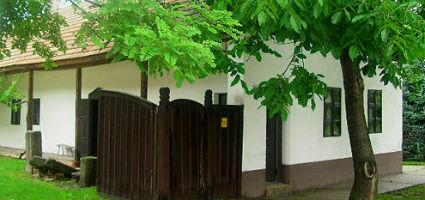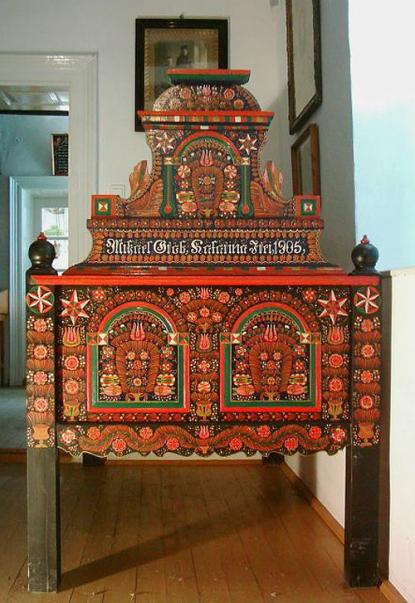2025. July 14. Monday
Regional House and Local History Collection - Harta
 |
Address: 6326, Harta Templom utca 62.
Phone number: (20) 965-7700
E-mail: gotpe@freemail.hu
Opening hours: 15.03-01.11.: Tue (on prior notice)
|
Harta is a village situated on the left bank of the Danube, 100 km south of Budapest having a population of 4000. Its modern history started in 1723 when the first settler families from the Rhineland-Palatinate, Hessen-Pfalz and Württenberg arrived at Pál Ráday's estate.
The country house was founded as a "Local History Collection" in 1967.
The house was left untouched for 30 years and desperately needed renovation when the roof and the interior were renewed in 2002. Following the restoration of its objects the Harta German National Country House was solemnly re-opened in its new form on 20th August 2006.
The dwelling authentically presents the interior design of the German minority living in Harta. The unforgettable scene of its two rooms with famous, uniquely painted furniture welcomes the visitors. Additional outstanding items of the collection are the local folk costumes and blue dyed textiles. Also several extraordinary beaded bonnets (called "haup") and knitted tights are exhibited. The open "smoke" kitchen which was preserved in its original form gives room for iron dishes, local potteries and "Mórágy" potteries bought at Dunaföldvár market.
Thanks to the subsidy received from the "Country Houses for the Community" program, new exhibition rooms could be opened in Baum-house in 2009. In "Harta Felvidék room", visitors can see the history and interior design of families who settled here from the Hungarian "Felvidék" (Upper Hungary). Also the paintings of a local artist, Tibor Gallé are displayed here. His pictures illustrate Harta at the beginning of the 20th century.
The house was left untouched for 30 years and desperately needed renovation when the roof and the interior were renewed in 2002. Following the restoration of its objects the Harta German National Country House was solemnly re-opened in its new form on 20th August 2006.
The dwelling authentically presents the interior design of the German minority living in Harta. The unforgettable scene of its two rooms with famous, uniquely painted furniture welcomes the visitors. Additional outstanding items of the collection are the local folk costumes and blue dyed textiles. Also several extraordinary beaded bonnets (called "haup") and knitted tights are exhibited. The open "smoke" kitchen which was preserved in its original form gives room for iron dishes, local potteries and "Mórágy" potteries bought at Dunaföldvár market.
Thanks to the subsidy received from the "Country Houses for the Community" program, new exhibition rooms could be opened in Baum-house in 2009. In "Harta Felvidék room", visitors can see the history and interior design of families who settled here from the Hungarian "Felvidék" (Upper Hungary). Also the paintings of a local artist, Tibor Gallé are displayed here. His pictures illustrate Harta at the beginning of the 20th century.
